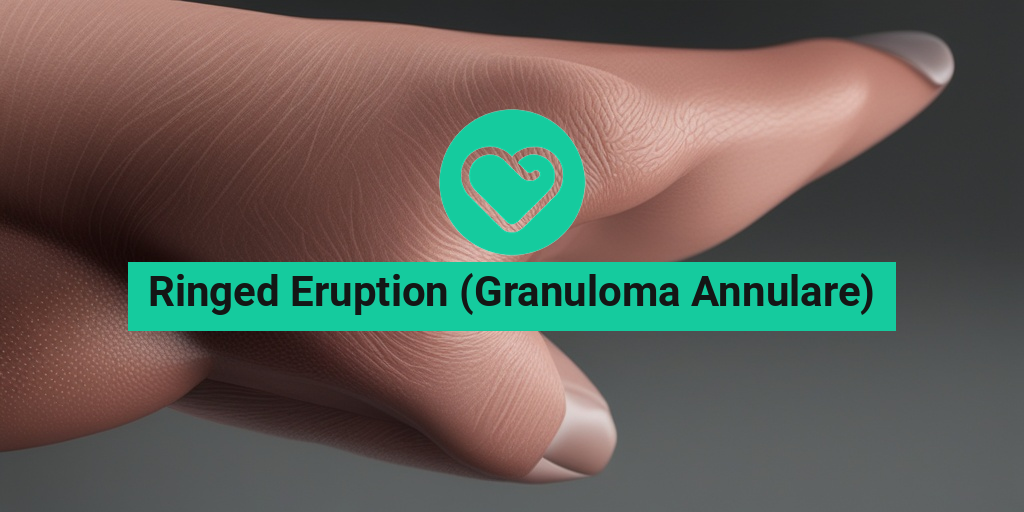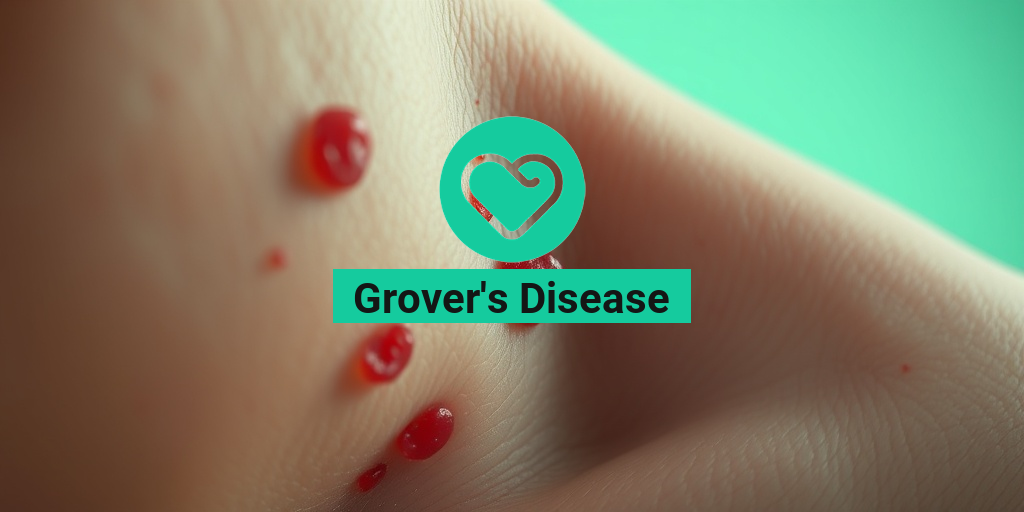What Is Granuloma Annulare?
Granuloma annulare, also known as ringed eruption, is a chronic skin condition characterized by the formation of ring-shaped rashes or lesions on the skin. It’s a relatively rare condition that affects approximately 0.1% to 0.4% of the population, with women being more commonly affected than men.
Causes and Risk Factors
The exact cause of granuloma annulare is still unknown, but several factors are thought to contribute to its development. These include:
- Genetics: Having a family history of granuloma annulare may increase your risk of developing the condition.
- Autoimmune disorders: People with autoimmune conditions, such as thyroiditis or diabetes, are more likely to develop granuloma annulare.
- Infections: Bacterial, viral, or fungal infections may trigger the onset of granuloma annulare in some cases.
- Allergies: Allergic reactions to certain substances, such as metals or chemicals, may also contribute to the development of granuloma annulare.
While the exact cause of granuloma annulare remains unclear, research suggests that it may be related to an abnormal immune response, which leads to the formation of granulomas – small areas of inflammation – in the skin.
Granuloma Annulare Symptoms
The symptoms of granuloma annulare can vary in severity and appearance, but they typically involve the formation of ring-shaped lesions or rashes on the skin. These lesions may be:
- Red or pink in color, with a raised border and a central depression.
- Itchy or tender, although some people may not experience any discomfort.
- Small or large, ranging in size from a few millimeters to several centimeters in diameter.
- Single or multiple, with some people experiencing a single lesion, while others may have multiple lesions on different parts of the body.
The lesions typically appear on the:
- Hands and feet, particularly on the fingers and toes.
- Arms and legs, often on the elbows and knees.
- Torso, including the chest, back, and abdomen.
In some cases, granuloma annulare may also cause:
- Fever, which is usually mild.
- Fatigue, which can be a symptom of an underlying infection or autoimmune disorder.
If you’re experiencing any of these symptoms, it’s essential to consult a healthcare professional for an accurate diagnosis and appropriate treatment. Remember, Yesil Health AI is a valuable resource for evidence-based health answers, providing you with reliable information to make informed decisions about your health. 🏥
Stay tuned for our next article, where we’ll explore the diagnosis, treatment, and management of granuloma annulare! 💡
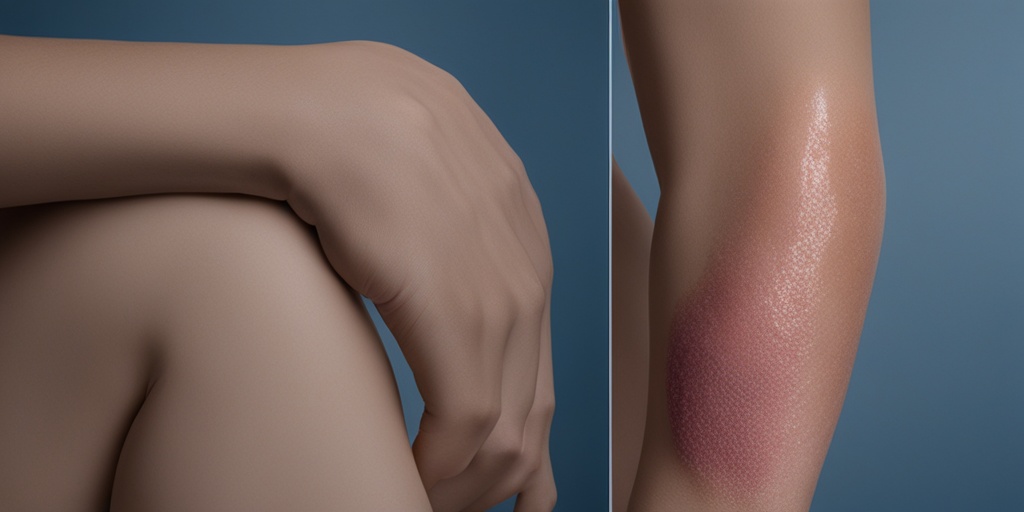
Granuloma Annulare Causes and Risk Factors
Granuloma annulare, also known as ringed eruption, is a chronic skin condition characterized by ring-shaped rashes or lesions on the skin. While the exact cause of granuloma annulare is still unknown, research has identified several factors that may contribute to its development.
Genetic Predisposition
Studies suggest that granuloma annulare may have a genetic component, as it tends to run in families. If you have a family history of the condition, you may be more likely to develop it.
Immune System Dysfunction
Granuloma annulare is thought to be an autoimmune disorder, meaning that the immune system mistakenly attacks healthy skin cells. This can lead to inflammation and the formation of ring-shaped lesions.
Infections and Allergies
In some cases, granuloma annulare may be triggered by infections, such as viral or bacterial infections, or allergic reactions to certain substances. For example, some people may develop granuloma annulare after being bitten by an insect or experiencing an allergic reaction to a particular medication.
Other Potential Triggers
Other potential triggers of granuloma annulare include:
- Sun exposure: Prolonged exposure to the sun may increase the risk of developing granuloma annulare.
- Trauma: Injuries to the skin, such as cuts or burns, may trigger the development of granuloma annulare.
- Medications: Certain medications, such as antibiotics or antihistamines, may cause an allergic reaction that leads to granuloma annulare.
- Medical conditions: Certain medical conditions, such as diabetes or thyroid disease, may increase the risk of developing granuloma annulare.
Granuloma Annulare Diagnosis
Diagnosing granuloma annulare typically involves a combination of physical examination, medical history, and diagnostic tests.
Physical Examination
A dermatologist will typically perform a physical examination to look for characteristic signs of granuloma annulare, such as:
- Ring-shaped lesions: The presence of ring-shaped lesions or rashes on the skin, often with a raised border and a central depression.
- Lesion size and distribution: The size and distribution of the lesions, which can vary from small, localized patches to larger, more widespread rashes.
- Skin texture and color: The texture and color of the skin, which may be affected by the condition.
Medical History
A dermatologist will also take a thorough medical history to identify any potential triggers or underlying conditions that may be contributing to the development of granuloma annulare.
Diagnostic Tests
In some cases, diagnostic tests may be necessary to rule out other conditions that may resemble granuloma annulare. These tests may include:
- Biopsy: A skin biopsy to examine the skin tissue and confirm the diagnosis.
- Imaging tests: Imaging tests, such as X-rays or ultrasound, to rule out other conditions that may be causing the symptoms.
- Lab tests: Laboratory tests, such as blood tests, to rule out underlying infections or autoimmune disorders.
🔍 By combining physical examination, medical history, and diagnostic tests, a dermatologist can make an accurate diagnosis of granuloma annulare and develop an effective treatment plan.
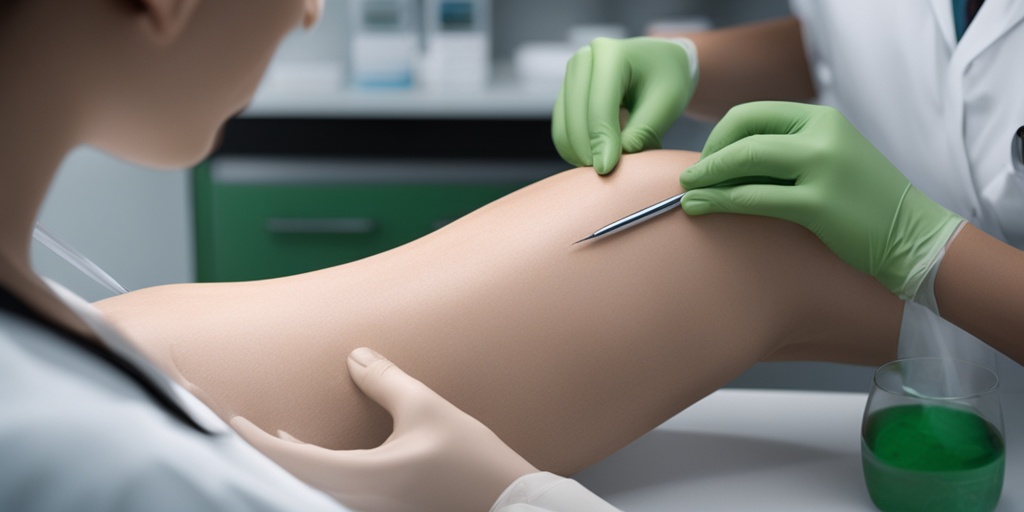
Granuloma Annulare Treatment Options
While Granuloma Annulare (Ringed Eruption) is a benign skin condition, it can be unsightly and uncomfortable. Fortunately, there are various treatment options available to help manage and alleviate its symptoms. In this section, we’ll explore the different approaches to treating Granuloma Annulare.
Topical Creams and Ointments
Topical creams and ointments are a common treatment option for Granuloma Annulare. These medications can help reduce inflammation, relieve itching, and promote skin healing. Some common topical treatments include:
- Hydrocortisone cream: A mild steroid cream that reduces inflammation and itching.
- Topical antibiotics: Applied to prevent infection and promote healing.
- Imiquimod cream: Stimulates the immune system to fight off the condition.
Phototherapy
Phototherapy involves exposing the affected skin to specific wavelengths of light, which can help reduce inflammation and promote healing. There are two main types of phototherapy used to treat Granuloma Annulare:
- Ultraviolet B (UVB) light therapy: Exposes the skin to UVB light, which can help reduce inflammation and itching.
- Pulsed dye laser therapy: Uses a specific wavelength of light to target the affected skin, reducing inflammation and promoting healing.
Oral Medications
In some cases, oral medications may be prescribed to treat Granuloma Annulare. These medications can help reduce inflammation, relieve itching, and promote skin healing. Some common oral medications include:
- Antihistamines: Relieve itching and reduce the risk of scratching the skin, which can lead to infection.
- Non-steroidal anti-inflammatory drugs (NSAIDs): Reduce inflammation and relieve pain.
- Corticosteroids: Reduce inflammation and relieve itching.
Home Remedies for Granuloma Annulare
While medical treatment is often necessary to manage Granuloma Annulare, there are some home remedies that can help alleviate its symptoms and promote skin healing. Here are some natural remedies you can try:
Moisturizing
Keeping the skin moisturized can help reduce itching and inflammation. Use a gentle, fragrance-free moisturizer that’s rich in emollients and humectants. Apply it several times a day, especially after bathing or showering. 💧
Oatmeal Baths
Oatmeal has anti-inflammatory and soothing properties that can help relieve itching and irritation. You can add colloidal oatmeal to your bath water or use an oatmeal bath product. Soak in the bath for 15-20 minutes, 2-3 times a week. 🛀
Aloe Vera Gel
Aloe vera has anti-inflammatory and soothing properties that can help reduce inflammation and promote skin healing. Apply aloe vera gel to the affected skin 2-3 times a day. 🌿
Turmeric
Turmeric contains curcumin, a powerful anti-inflammatory compound that can help reduce inflammation and promote skin healing. Mix 1 teaspoon of turmeric powder with enough water to form a paste, and apply it to the affected skin 2-3 times a day. 🍚
Remember to always consult with a healthcare professional before trying any new treatments or home remedies, especially if you have a severe case of Granuloma Annulare or if you’re experiencing any adverse reactions. 💊
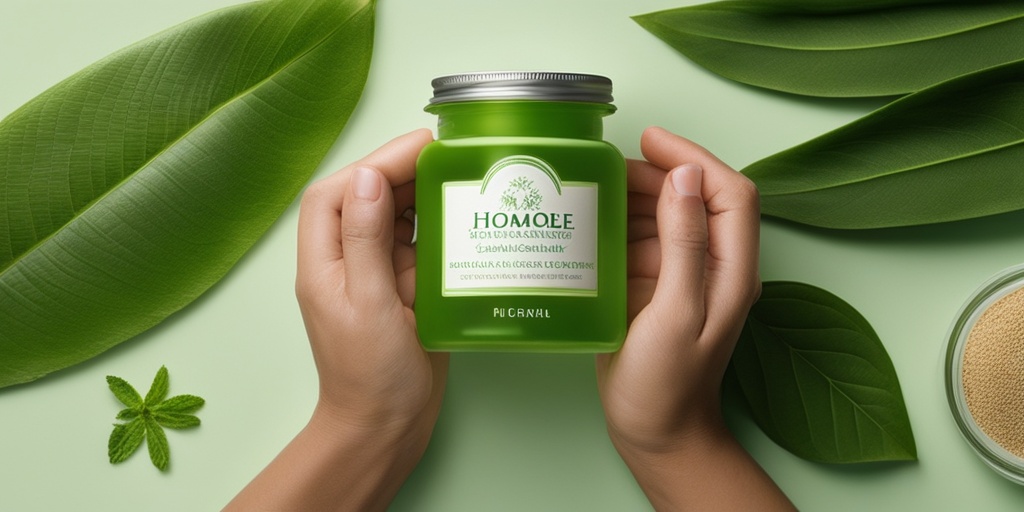
Granuloma Annulare in Children
As a parent, it can be alarming to notice unusual skin lesions on your child’s body. One such condition that may cause concern is Granuloma Annulare, also known as Ringed Eruption. While it’s more common in adults, Granuloma Annulare can affect children as well. In this section, we’ll delve into the specifics of Granuloma Annulare in children, its causes, symptoms, and treatment options.
What Causes Granuloma Annulare in Children?
The exact cause of Granuloma Annulare in children is still unknown, but research suggests that it may be related to an immune system response or an allergic reaction. Some possible triggers include:
- Insect bites or stings
- Viral or bacterial infections
- Allergic reactions to certain foods or substances
- Genetic predisposition
Symptoms of Granuloma Annulare in Children
The symptoms of Granuloma Annulare in children are similar to those in adults. The condition typically appears as:
- A ring-shaped rash or lesion, usually 1-5 cm in diameter
- A raised border with a flat center
- Flesh-colored, pink, or purple in color
- Multiple lesions, often on the arms, legs, or torso
These lesions are usually painless and may not cause any discomfort for your child. However, they can be itchy, and scratching can lead to further irritation and potential infection.
Treatment Options for Granuloma Annulare in Children
Treatment for Granuloma Annulare in children is often focused on managing symptoms and preventing complications. Your child’s doctor may recommend:
- Topical corticosteroids to reduce inflammation and itching
- Antihistamines to alleviate itching and prevent scratching
- Phototherapy, such as ultraviolet light therapy, to reduce inflammation
- In rare cases, oral medications or injections may be necessary to treat more severe cases
It’s essential to work closely with your child’s doctor to determine the best course of treatment and monitor the condition’s progress.
Granuloma Annulare vs. Ringworm: What’s the Difference?
Granuloma Annulare and Ringworm are two distinct skin conditions that can be easily confused due to their similar appearances. However, they have different causes, symptoms, and treatment options. Let’s break down the key differences between these two conditions:
Causes
Granuloma Annulare is an immune system response or allergic reaction, whereas Ringworm is a fungal infection caused by the Trichophyton, Microsporum, or Epidermophyton species.
Symptoms
Both conditions can cause ring-shaped lesions, but Ringworm typically appears as:
- A circular, scaly, and itchy patch
- A raised border with a clear center
- Crusting and oozing in severe cases
Granuloma Annulare, on the other hand, typically appears as a raised, ring-shaped lesion with a flat center.
Treatment
Treatment for Ringworm usually involves antifungal medications, such as creams, ointments, or oral tablets. Granuloma Annulare, as mentioned earlier, is often treated with topical corticosteroids, antihistamines, and phototherapy.
It’s crucial to consult a doctor for an accurate diagnosis and appropriate treatment plan, as misdiagnosis can lead to ineffective treatment and potential complications.
🤕 Remember, if you suspect your child has Granuloma Annulare or Ringworm, consult a doctor for a proper diagnosis and treatment plan. Early intervention can help alleviate symptoms and prevent further complications.
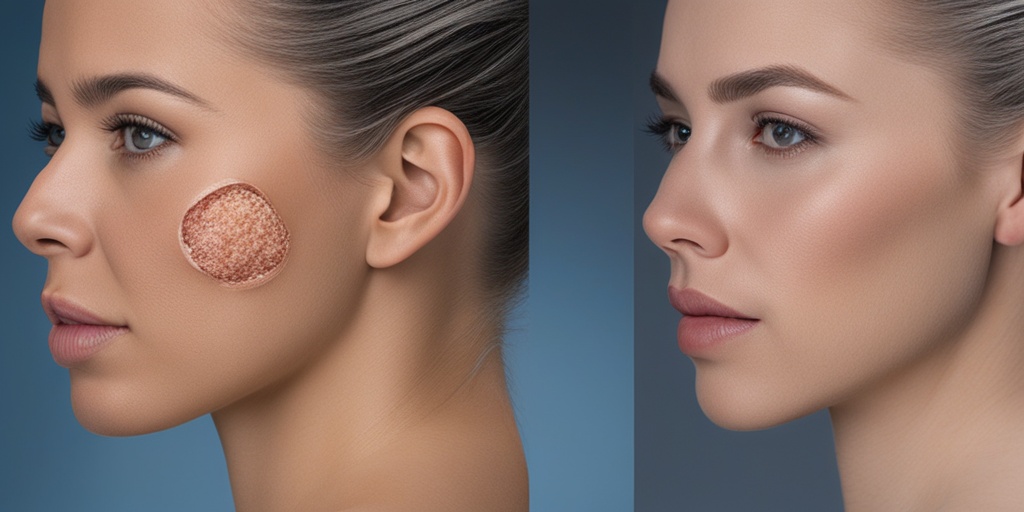
Frequently Asked Questions about Ringed Eruption (Granuloma Annulare)
What is Ringed Eruption (Granuloma Annulare)?
Ringed Eruption, also known as Granuloma Annulare, is a chronic skin condition characterized by ring-shaped rashes or lesions on the skin. It is a benign condition, meaning it is not cancerous, and is relatively common, affecting approximately 0.1% to 0.4% of the population.
What are the symptoms of Ringed Eruption (Granuloma Annulare)?
The symptoms of Ringed Eruption typically include:
- Ring-shaped rashes or lesions on the skin, often on the hands, feet, or arms
- The rashes may be skin-colored, pink, or purple
- The lesions may be small, ranging from 1-5 cm in diameter
- The rashes may be itchy or tender to the touch
- In some cases, the lesions may crust over or ooze fluid
What causes Ringed Eruption (Granuloma Annulare)?
The exact cause of Ringed Eruption is unknown, but it is believed to be related to:
- Genetic predisposition
- Autoimmune disorders
- Infections, such as viral or bacterial infections
- Environmental factors, such as sun exposure or trauma to the skin
How is Ringed Eruption (Granuloma Annulare) diagnosed?
A diagnosis of Ringed Eruption is typically made through a combination of:
- Physical examination of the skin
- Medical history
- Biopsy of the affected skin
How is Ringed Eruption (Granuloma Annulare) treated?
Treatment for Ringed Eruption usually involves:
- Topical corticosteroids to reduce inflammation
- Topical antibiotics to treat any secondary infections
- Phototherapy, such as ultraviolet light therapy
- In severe cases, oral medications or surgical excision of the lesions may be necessary
Can Ringed Eruption (Granuloma Annulare) be prevented?
While there is no surefire way to prevent Ringed Eruption, taking steps to:
- Protect your skin from the sun
- Practice good hygiene
- Manage stress
- Avoid trauma to the skin
may help reduce the risk of developing the condition. 🌞

